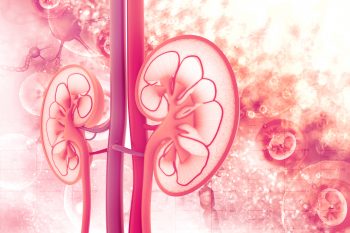
There is an association between hyperkalemia and adverse clinical events in patients on hemodialysis identified by a single potassium serum potassium measurement or time-averaged potassium values. However, according to researchers, variability in serum potassium levels or excursions out of potassium target range are not reflected in the mean value of serial predialysis potassium measurements.
The researchers utilized data from phases 4 to 6 of DOPPS (Dialysis Outcomes and Practice Patterns Study) prospective cohort study to examine the number of hyperkalemia excursions over 4-month periods. The analysis used three definitions of hyperkalemia excursion: (1) serum potassium >5.0 mEq/L; (2) serum potassium >5.5 mEq/L; and (3) serum potassium >6.0 mEq/L. The researchers used Cox regression, adjusted for potential confounders, to investigate the association of hyperkalemia with all-cause mortality over the subsequent 4 months.
The analysis included 243,886 4-month periods across 61,897 patients receiving hemodialysis. For the three prespecified definitions of hyperkalemia excursions, the prevalence of at least one hyperkalemia excursion over a 4-month period was 58%, 30%, and 12%, respectively. Hyperkalemia excursions were most common in Russia (68%) and least common in the United States (25%).
Patients who experienced hyperkalemia excursions tended to be younger, have longer duration of hemodialysis, and higher levels of serum albumin and phosphorus. In adjusted models, compared with 4-month periods with no hyperkalemia excursions, the mortality rate over the subsequent 4 months was 10% to 20% higher with exactly one hyperkalemia excursion and 20% to 30% higher with two or more hyperkalemia excursions.
“A clear association between one or more hyperkalemia excursions and all-cause mortality was observed regardless of the hyperkalemia threshold,” the researchers concluded. “This method to assess target potassium achievement may be more sensitive at identifying patients with greater mortality risk over short-term intervals at lower thresholds (5.1-5.5 mEq/L) than previously reported, prompting reassessment of existing hyperkalemia severity ranges and exploration of strategies to avoid hyperkalemia excursions.”
Source: Karaboyas A, Nitta K, Pecoits-Filho R, et al. Hyperkalemia excursions and mortality in hemodialysis patients: Results from the DOPPS. Abstract of a presentation at the American Society of Nephrology Kidney Week 2019 (Abstract SA-OR067), November 9, 2019, Washington, DC.






 © 2025 Mashup Media, LLC, a Formedics Property. All Rights Reserved.
© 2025 Mashup Media, LLC, a Formedics Property. All Rights Reserved.